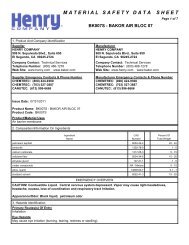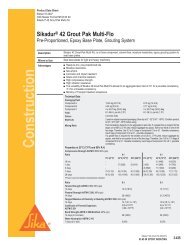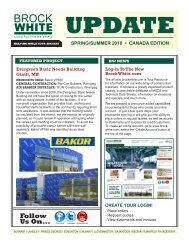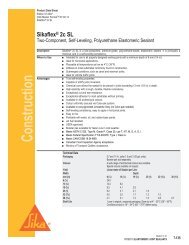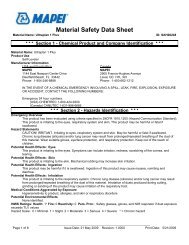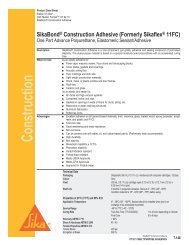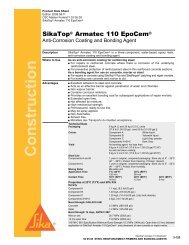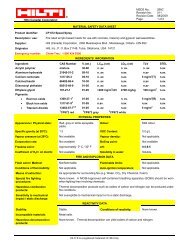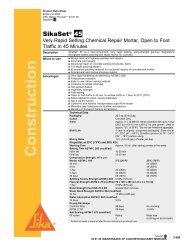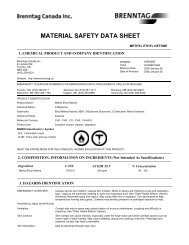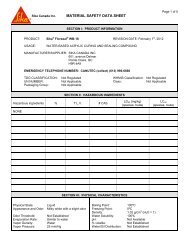Operations Manual - TE 6-A-36-AVR Cordless ... - Brock White
Operations Manual - TE 6-A-36-AVR Cordless ... - Brock White
Operations Manual - TE 6-A-36-AVR Cordless ... - Brock White
You also want an ePaper? Increase the reach of your titles
YUMPU automatically turns print PDFs into web optimized ePapers that Google loves.
en<br />
held more securely than by hand and both hands<br />
remain free to operate the power tool.<br />
b) Check that the insert tools used are compatible<br />
with the chuck system and that they are secured<br />
in the chuck correctly.<br />
5.2.3 <strong>Cordless</strong> tool use and care<br />
a) Ensure the switch is in the off position before<br />
inserting battery pack. Inserting the battery pack<br />
into power tools that have the switch on invites<br />
accidents.<br />
b) Observe the special instructions applicable to the<br />
transport, storage and use of Li-ion batteries.<br />
c) Do not expose batteries to high temperatures or<br />
fire. This presents a risk of explosion.<br />
d) Batteries must not be opened or dismantled,<br />
squashed, heated to temperatures over 100°C<br />
or incinerated. A risk of fire, explosion or injury<br />
through contact with caustic substances may<br />
otherwise result.<br />
e) Do not use batteries other than those approved<br />
for use with the applicable power tool or appliance.<br />
Use of other batteries or use of the battery<br />
for purposes for which it is not intended presents<br />
a risk of fire and explosion.<br />
f) Do not charge or continue to use damaged batteries<br />
(e.g. batteries with cracks, broken parts,<br />
bent or pushed-in and/or pulled-out contacts).<br />
g) Avoid short-circuiting the battery. Check that the<br />
terminals on the battery and in the power tool<br />
are free from foreign objects before inserting<br />
the battery in the power tool. Short circuiting the<br />
battery terminals presents a risk of fire, explosion<br />
and chemical burns.<br />
h) Avoid ingress of dampness. Dampness may cause<br />
a short circuit resulting in a risk of burning injury<br />
or fire.<br />
5.2.4 Electrical safety<br />
Before beginning work, check the working area<br />
(e.g. using a metal detector) to ensure that no<br />
concealed electric cables or gas and water pipes<br />
are present. External metal parts of the power tool<br />
may become live, for example, when an electric cable<br />
is damaged accidentally. This presents a serious risk<br />
of electric shock.<br />
5.2.5 Work area safety<br />
a) Ensure that the workplace is well lit.<br />
b) Ensure that the workplace is well ventilated.<br />
Exposure to dust at a poorly ventilated workplace<br />
may result in damage to the health.<br />
c) If the work involves breaking right through, take<br />
the appropriate safety measures at the opposite<br />
side. Parts breaking away could fall out and / or<br />
fall down and injure other persons.<br />
5.2.6 Personal protective equipment<br />
The user and any other persons in the vicinity must<br />
wear suitable eye protection, a hard hat, ear protection,<br />
protective gloves and breathing protection<br />
while the tool is in use.<br />
6. Before use<br />
6.1 Battery use and care<br />
NO<strong>TE</strong><br />
Battery performance drops at low temperatures.<br />
Never use the battery until the cells become fully<br />
discharged. Change to the second battery as soon<br />
as a drop in performance is noticed. Recharge the<br />
battery immediately so that it is ready for reuse.<br />
Store the battery in a cool, dry place. Never store<br />
the battery where it is exposed to direct sunlight or<br />
sources of heat, e.g. on heaters / radiators or behind a<br />
motor vehicle windscreen. Batteries that have reached<br />
the end of their life must be disposed of safely and<br />
correctly to avoid environmental pollution.<br />
8



